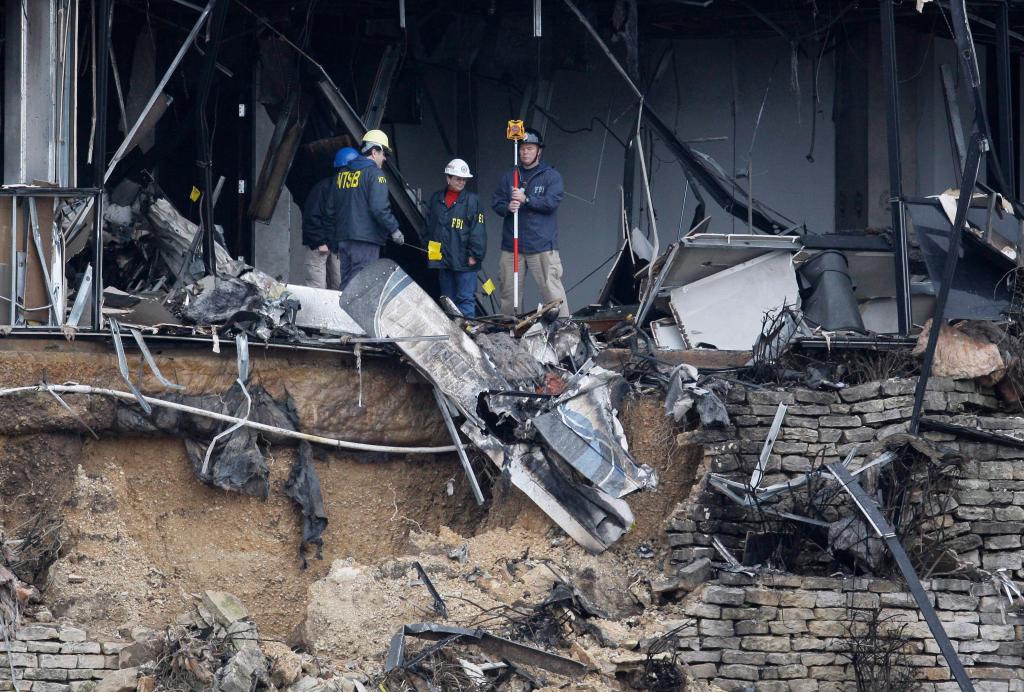GEORGETOWN, Texas — After 9/11, cockpit doors were sealed, air marshals were added and airport searches became more aggressive, all to make sure an airliner could never again be used as a weapon. Yet little has been done to guard against attacks with smaller planes.
That point was driven home with chilling force on Thursday when a Texas man with a grudge against the IRS crashed his single-engine plane into an office building in a fiery suicide attack. One person inside the building was also killed.
”It’s a big gap,” said R. William Johnstone, an aviation security consultant and former staff member of the commission that investigated the Sept. 11 attacks. ”It wouldn’t take much, even a minor incident involving two simultaneously attacking planes, to inflict enough damage to set off alarm bells and do some serious harm to the economy and national psyche.”
The suburban Georgetown Municipal Airport that pilot Joe Stack entered hours before his airborne attack in nearby Austin had the casual atmosphere of a sleepy parking garage. Pilots were not subject to baggage checks, metal detector scans or pat-downs. And they are usually not required to file flight plans.
”How are they going to stop it? This guy had a hangar, and he had access to the airport,” said Beth Ann Jenkins, president of Pilot’s Choice, a flight school near where Stack kept his Piper.
Travis McLain, manager of the airport, said: ”I don’t know of a rule or regulation or safety precaution that could have prevented what happened yesterday.”
The easy access and lack of security are the result of years of debate – and stalemate – over how much of a threat small aircraft pose as terror weapons and how they could be regulated without stifling commerce and pilot freedom.
While the airlines quickly accepted tougher security after Sept. 11, the general aviation industry, which includes everything from privately owned propeller-driven planes to large corporate jets, have aggressively fought new measures.
The proposed rules would require that operators of medium and large general-aviation aircraft demonstrate that flight crews have undergone a criminal background check. They would also be required to verify passengers are not on the no-fly lists used by large airlines.
Private pilots fly approximately 200,000 small and medium-size planes in the U.S., using 19,000 airports, most of them small. The planes’ owners insist the aircraft have nothing in common with airliners but the sky.
”I don’t see a gaping security hole here,” said Tom Walsh, an aviation security consultant. ”In terms of aviation security, there are much bigger fish to fry than worrying about small aircraft.”
He said most would-be terrorists would draw the same conclusion – that tiny aircraft don’t pack a big enough punch.
Planes like Stack’s weigh just a few thousands pounds and carry no more than 100 gallons of fuel, he noted. A Boeing 767 weighs 400,000 pounds and carries up to 25,000 gallons of fuel.
Walsh and other general aviation advocates argue that stringent security and bureaucracy would deter recreational fliers and slow down a vibrant, multibillion-dollar general aviation industry, causing economic damage.
”What it comes down to is that the cure could be worse than the disease,” he said.
Send questions/comments to the editors.



Success. Please wait for the page to reload. If the page does not reload within 5 seconds, please refresh the page.
Enter your email and password to access comments.
Hi, to comment on stories you must . This profile is in addition to your subscription and website login.
Already have a commenting profile? .
Invalid username/password.
Please check your email to confirm and complete your registration.
Only subscribers are eligible to post comments. Please subscribe or login first for digital access. Here’s why.
Use the form below to reset your password. When you've submitted your account email, we will send an email with a reset code.